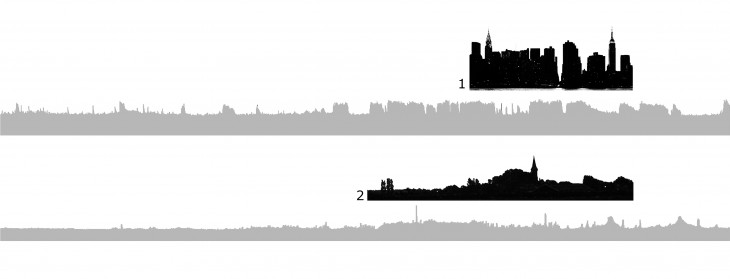What is relationship between space in the city and hearing perception? How varies width of vision field in cityscapes and field of hearing in soundscapes depending on it’s density? R. Murray Shafer wrote that in rural areas sounscape is uncrowded, surrounded by pools of stillness. It gives potentiality to orientate and define surrounding. Whilst high density cities produce lo-fi soundscape. As a result background lo-fi noise mask perspective of sounds. These features affect sense of orientation on site.
Sound recording experiment helped to reveal interesting parallel between silhouettes of cityscapes, noise frequency which is usually met in these spaces and shape of recording track. Here is an example of two different sound records and two panoramas.
- Daytime sound record was intense, filled with high level background noises, which were interrupted by some quieter brakes. It was harder to distinguish and follow individual sounds. The soundscape was quite flat and monotonic. As a parallel I took high density NYC panorama, which has narrow gaps between towering skyscrapers.
- Recording made at night was more silent and therefore more dynamic. Since there was almost no background noise from cars, it was easy to distinguish and track even sounds. It created spatial perception of what is happening outside. Clearly audible upcoming and receding voices allowed clearly imagine what and how far action is happening. It is similar to rural landscapes which have lower, still silhouette with few contrasting dominant points in landscape. Low-rase buildings.
What if look vice-versa and listen how city sounds by scanning it’s panorama?

